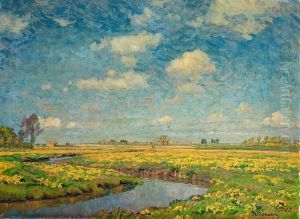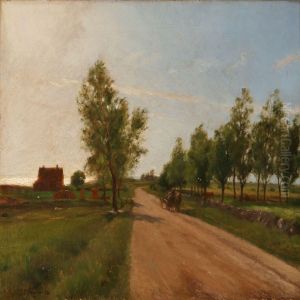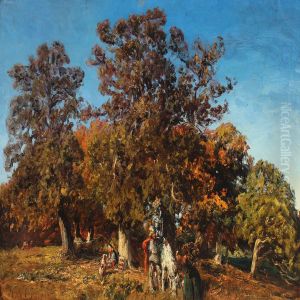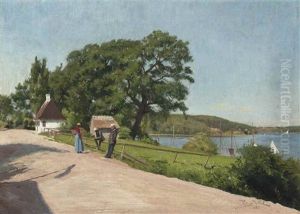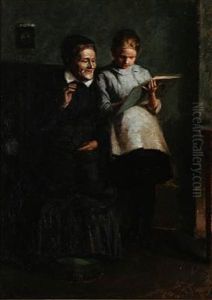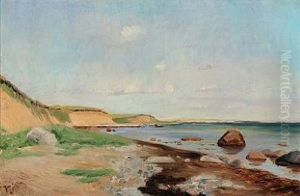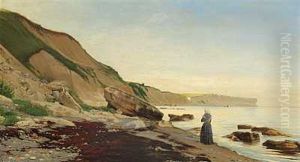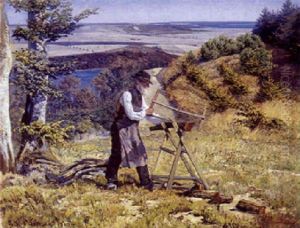Peder Vilhelm Jensen-Klint Paintings
Peder Vilhelm Jensen-Klint was a Danish architect, designer, painter, and architectural theorist, born on June 21, 1853, in the town of Mineslund, Denmark. Jensen-Klint is best known for designing the Grundtvig's Church in Copenhagen, which is considered one of the most notable architectural works in Denmark and a seminal example of expressionist church architecture.
Jensen-Klint initially trained as a bricklayer before pursuing his passion for architecture. He attended the Royal Danish Academy of Fine Arts, where he was educated in the historicist tradition, a style that drew inspiration from historical architectural styles. He graduated in 1870 and began his career as an architect. Despite his later fame, Jensen-Klint did not receive significant recognition until he was in his fifties.
Throughout his career, Jensen-Klint blended a respect for traditional Danish village architecture with the principles of the National Romantic style, which emphasized a return to local building traditions and materials. His works often featured the use of brick and a keen attention to detail, showing his craftsman background.
The most significant phase of his career began with his design for Grundtvig's Church in 1913, named in honor of N.F.S. Grundtvig, a prominent Danish philosopher, poet, and reformer. The church's design is a unique synthesis of gothic church architecture with modern style elements, and it took several decades to complete, with the main building finished just after Jensen-Klint's death in 1930. The church remains a landmark in Copenhagen and a testament to his architectural vision.
In addition to his architectural work, Jensen-Klint was also a respected painter and made contributions to educational theory in Denmark. He believed in the importance of integrating artistic practice with craftsmanship and was associated with the arts and crafts movement in Denmark.
Jensen-Klint's legacy is reflected in his influence on Danish architecture and design, particularly through his son, Kaare Klint, who became a renowned furniture designer and was instrumental in establishing the Danish Modern style. Peder Vilhelm Jensen-Klint passed away on December 1, 1930, leaving behind a body of work that continues to be celebrated for its originality and profound cultural impact.
